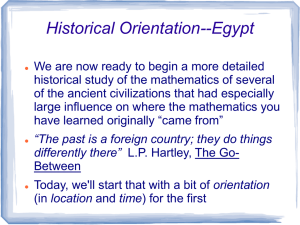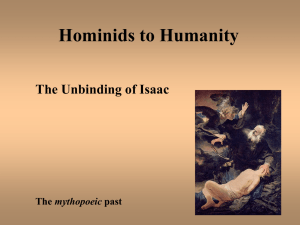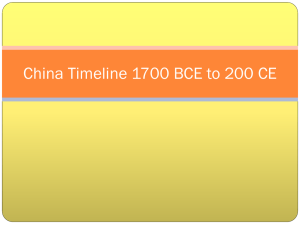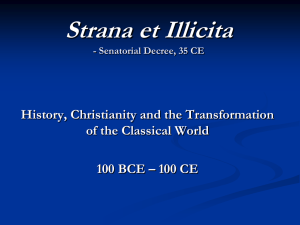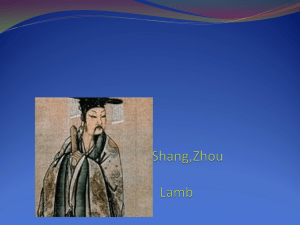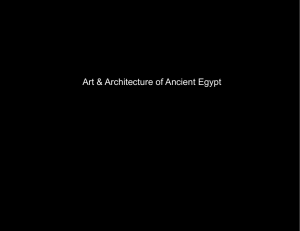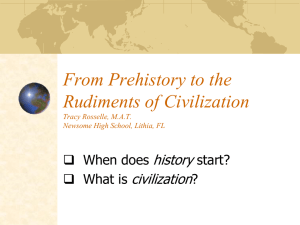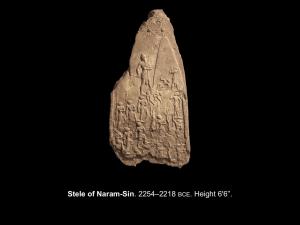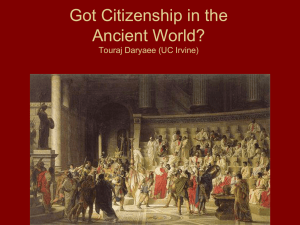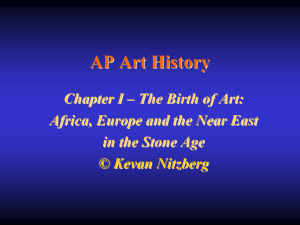3300 B.C. Egyptians perfect hieroglyphics
advertisement
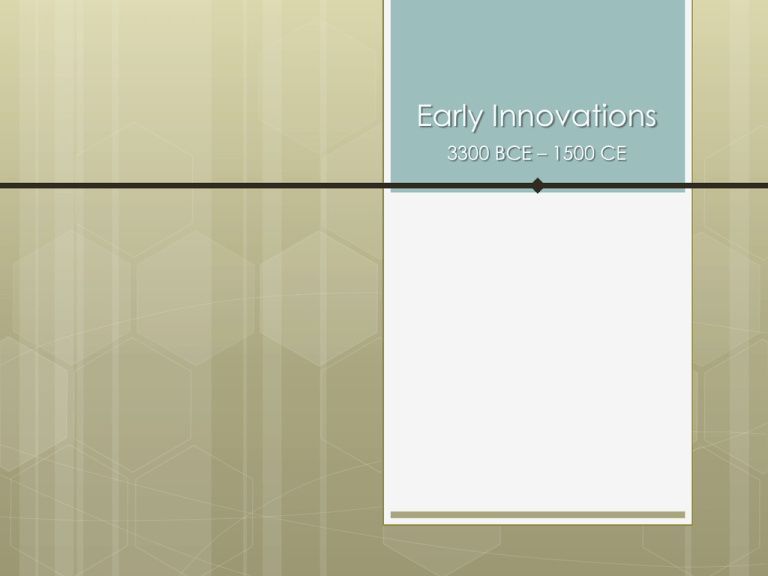
Early Innovations 3300 BCE – 1500 CE Early Innovations 3300 BCE – 1500 CE 3300 B.C. Egyptians perfect hieroglyphics This system of writing involved absolutely no vowels, consisting only of consonants. The Egyptians also did not use any form of punctuation or spacing. With over 700 ancient Egyptian symbols representing actual words and thousands of others used for individual sounds, some quite intricate, it took quite a long time to learn to write in hieroglyphics. Egyptian hieroglyphics were written both vertically in rows and horizontally in columns. Early Innovations 3300 BCE – 1500 CE 1050 BCE Semites devise the alphabet Alf Bet Gaml Delt He Wau Zai Het Tet Yod Kaf Lamd Mem Nun Semk Ain Pe Sade Qof Rosh Shin Tau The Phoenician adaptation of the alphabet was extremely successful, and variants were adapted around the Mediterranean from about the 9th century BC, notably giving rise to the Greek, Old Italic, Anatolian and Paleohispanic scripts. The alphabet's success was due in part to its phonetic nature; Phoenician was the first widely used script in which one sound was represented by one symbol. This simple system contrasted with the other scripts in use at the time, such as Cuneiform and Egyptian hieroglyphs, which employed many complex characters and were difficult to learn. Phoenician had long-term effects on the social structures of the civilizations which came in contact with it. The script was the first widespread phonetic script. Its simplicity not only allowed it to be used in multiple languages, but it also allowed the common people to learn how to write. Early Innovations 3300 BCE – 1500 CE 1000 BCE Egyptian papyrus, early form of paper Bill of sale for a donkey on papyrus Thick paper-like material produced from the core of a papyrus plant. Ancient Egyptians used papyrus as writing material and for boats, mattresses, mats, rope, sandals, and baskets. Sheets of parchment were folded to form quires from which book-form codices were fashioned. Papyrus had the advantage of being relatively cheap and easy to produce, but it was fragile and susceptible to both moisture and excessive dryness. Unless the papyrus was of perfect quality, the writing surface was irregular, and the range of media that could be used was also limited. Early Innovations 3300 BCE – 1500 CE 60 BCE Acta Diurna, forerunner of newspaper Latin for Daily Acts sometimes translated as Daily Public Records. They were daily Roman official notices, a sort of daily gazette. They were carved on stone or metal and presented in message boards in public places like the Forum of Rome. Their original content included results of legal proceedings and outcomes of trials. Later the content was expanded to public notices and announcements and other noteworthy information such as prominent births, marriages and deaths. After a couple of days the notices were taken down and archived (though no intact copy has survived to the present day). Sometimes scribes made copies of the Acta and sent them to provincial governors for information. Later emperors used them to announce royal or senatorial decrees and events of the court. Early Innovations 3300 BCE – 1500 CE 1041 CE Printing by means of separate, movable characters in China Movable type is the system of printing and typography that uses movable components to reproduce the elements of a document (using individual letters or punctuation). Created by Bi Sheng during the Song Dynasty. This form of printing was expensive, and required an enormous amount of labor involved in manipulating the thousands of metal tablets required for scripts based on the Chinese writing system, which have thousands of characters. Early Innovations 3300 BCE – 1500 CE 1446 CE Johannes Gutenberg introduces moveable type printing press in Germany Johannes Gensfleisch zur Laden zum Gutenberg (1398-1468) Influenced by records of Bi Sheng, Gutenberg invented the printing press and developed a movable type system in Europe. The limited number of characters needed for European languages was an important factor, making the process more efficient. Gutenberg was the first to create his type pieces from an alloy of lead, tin, and antimony—the same components still used today. The metal type pieces were more durable and the lettering was more uniform, leading to typography and fonts. Early Innovations 3300 BCE – 1500 CE 1468 A.D. William Caxton produces a book in England with the printed advertisement ‘If it pies ony man spirituel or temporel to bye ony pyes of two and three comemoracids of salisburi vse enpryntid after the forme of this preset lcttre whiche ben wel and truly correct, late hym come to wcstmonester in to the almonesrye at the reed pale, and he shall have them good chep.’ This advertisement offers consumers the chance to pick up prayer books at the Red Pale tavern near the home for destitute women in Westminster. They are available for a cheap price.
